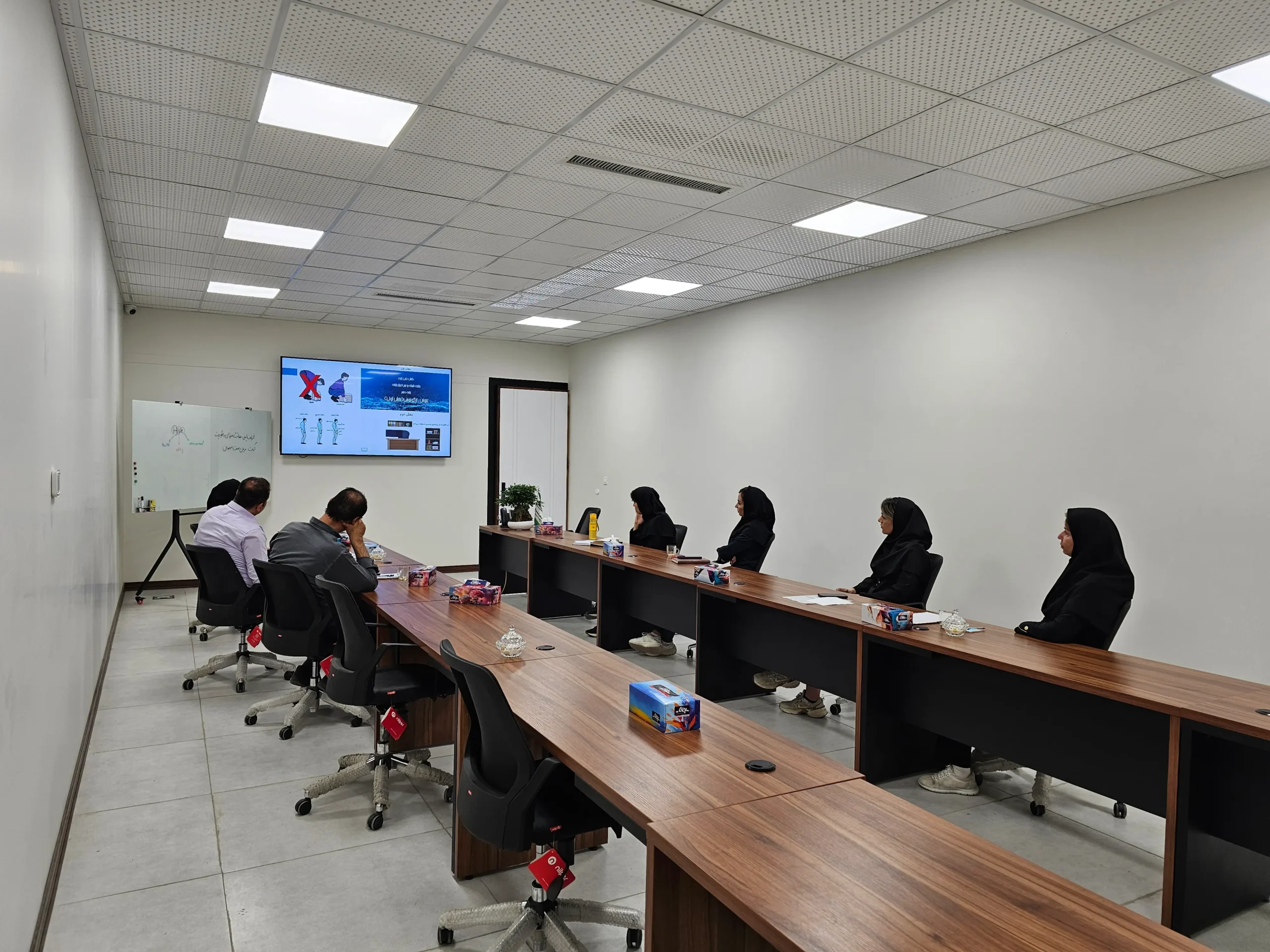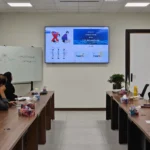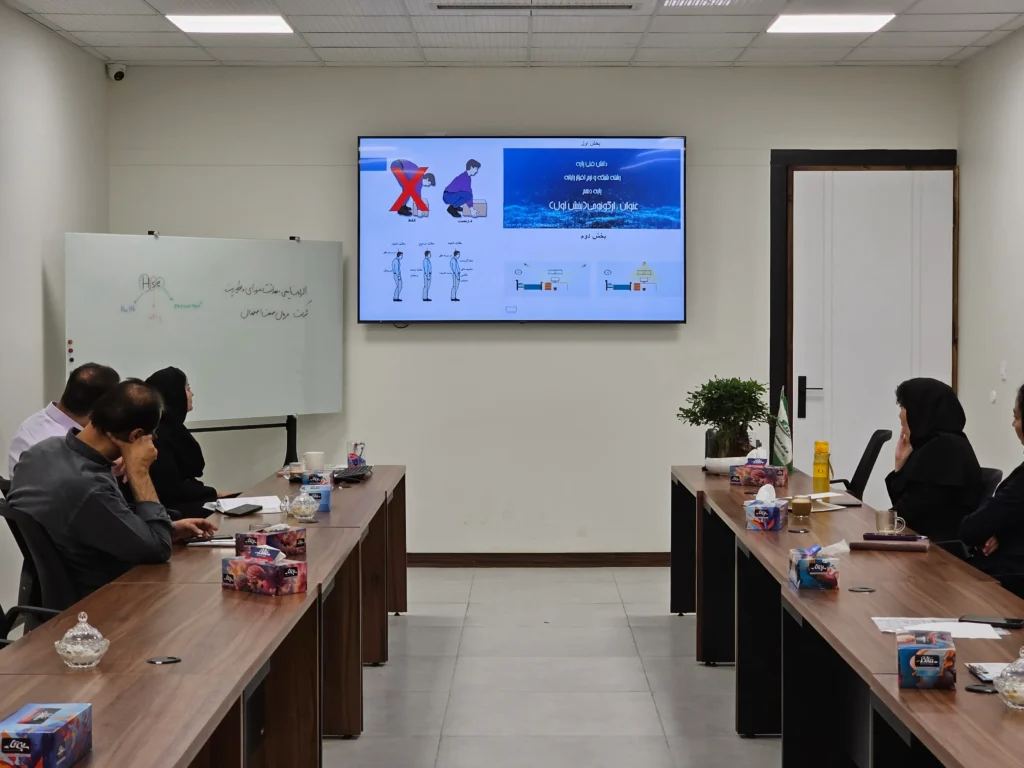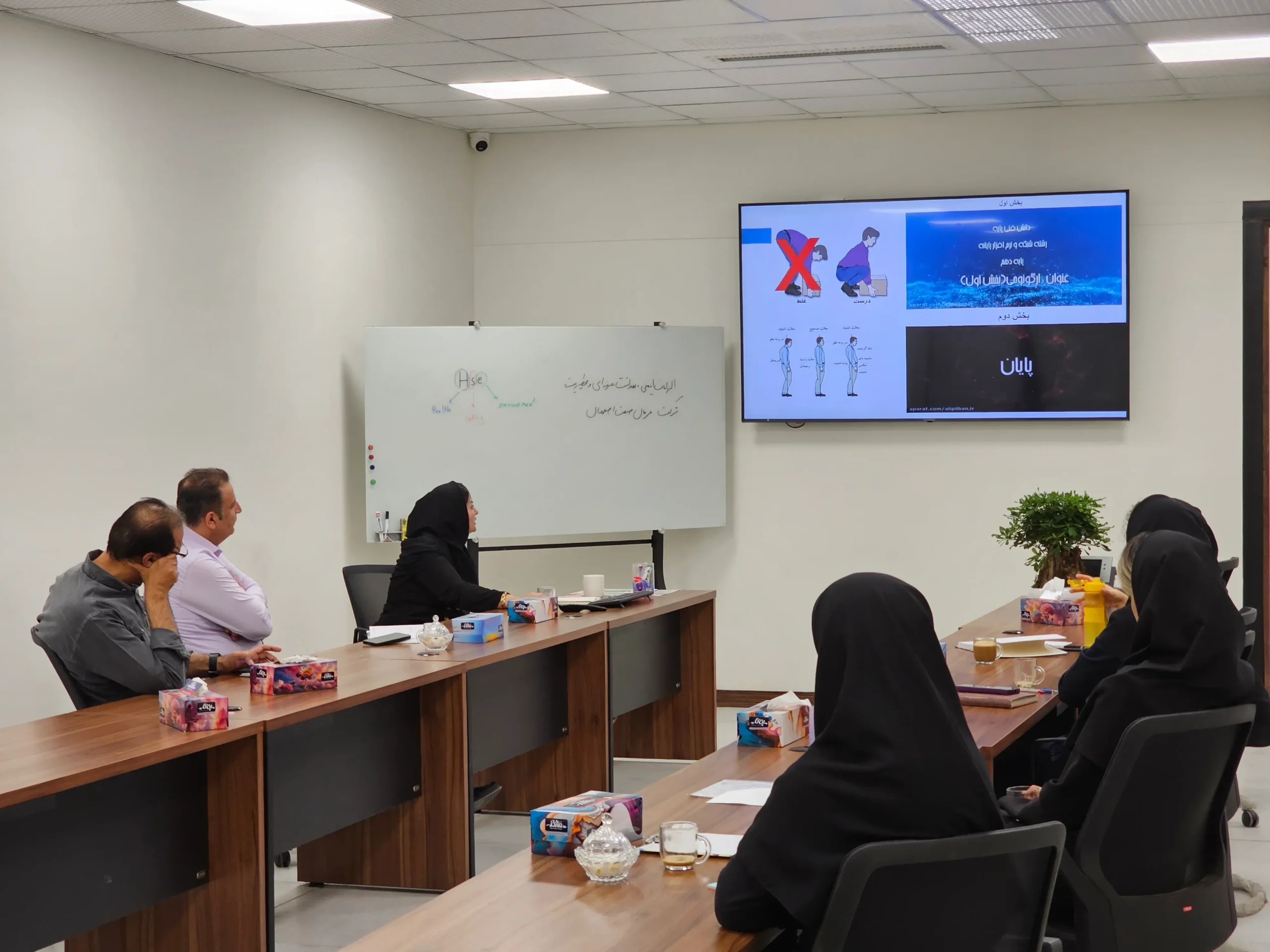In line with increasing the level of awareness and safety of administrative personnel and with the aim of promoting a culture of safety in the workplace, a Safety, Health, and Environment (HSE) training session was held on 1404/7/7 in the training hall of Erfan Sanat Isfahan company. This session, which was attended by employees from various administrative departments of the company, was dedicated to the basic principles in the field of safety management, accident prevention, familiarization with workplace hazards, and how to report incidents, and was designed with the goal of transferring specialized and practical knowledge to newly hired employees. The instructor of this course, Ms. Taheri (Occupational Health Expert and Head of the company’s HSE unit), conveyed key topics through a slide presentation and the showing of several instructional clips in a clear and understandable manner. Below, you will see a review of the topics, results, and key points of this training event.
Objectives and Importances of HSE
The Safety, Health, and Environment (HSE) management system is formed based on the need to maintain the security and health of employees, prevent environmental pollution, and optimize work processes.
The implementation of this system helps organizations to identify, assess, and control potential hazards in the workplace and thereby, minimize the probability of work-related accidents and illnesses. When the safety and health of the workforce are placed at the forefront of priorities, not only can a reduction in losses and costs resulting from accidents be witnessed, but the morale, motivation, and productivity of employees also improve significantly.
Key Definitions of Safety and Occupational Health
Understanding the precise meanings of the main definitions in the field of Safety, Health, and Environment (HSE) is essential for creating a common language between employees and managers. For example, a hazard refers to conditions or factors that may lead to physical injury, illness, or financial damage. An accident is a sudden and unforeseen event that causes harm to a person, equipment, or the environment. A near miss (Near Miss) refers to an event that could have caused a major accident, but was prevented from occurring for various reasons.
Recognizing these concepts helps employees to better understand workplace risks, report accidents and near misses in a timely manner, and play their part in preventing serious injuries. Also, by using a common language in definitions, the processes of hazard identification, assessment, prevention, and incident management in the organization are implemented in a coordinated and efficient manner.

Event Report: Employer and Employee Collaboration
In this training session, the employer and employees of Erfan Sanat company were jointly present, and the importance of collaboration in creating and improving safe and healthy workplace conditions was emphasized. This event was a suitable opportunity to, in addition to reminding each member of their role in maintaining safety, examine challenges and potential solutions through dialogue and exchange of views.
The active cooperation and participation of the attendees led to the formation of a dynamic and effective atmosphere for promoting a culture of safety in the organization and the company’s commitment to the sustainability and well-being of its workforce was once again emphasized.
Continuing the session, the participants proceeded to discuss the main existing challenges in the field of Safety, Health, and Environment (HSE). Among the most important issues raised was continuous training on accidents. The members present suggested that by increasing cooperation between different departments of the organization, developing more practical guidelines, and expanding the culture of reporting, positive and effective steps can be taken towards improving workplace safety and health. This exchange of views led to the formulation of practical and planned solutions to address the challenges raised, which, if implemented, can lead to an increase in the level of safety and well-being of the employees.
Key Points and Action Plans of the Session
In this section, the most important points raised in the session and the action plans that have been formulated to improve workplace safety and health are reviewed. The main focus of the session was on identifying existing challenges (such as increasing training and improving the reporting culture). In response to these challenges, the company members proposed practical solutions such as increasing coordination between departments, preparing more practical guidelines, and developing a comprehensive reporting culture as implementation priorities, and committed to their implementation. Furthermore, continuous follow-up of actions, periodic review of the strengths and weaknesses of safety programs, and the exchange of feedback on the path to continuous improvement were emphasized. These points provide a clear vision of the path ahead for promoting the safety and well-being of employees and highlight universal participation as a key principle for success in the implementation of any safety plan.







